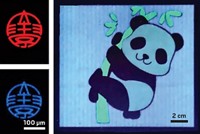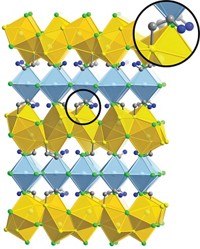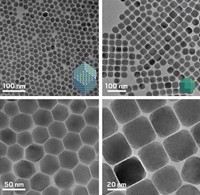Advertisement
Grab your lab coat. Let's get started
Welcome!
Welcome!
Create an account below to get 6 C&EN articles per month, receive newsletters and more - all free.
It seems this is your first time logging in online. Please enter the following information to continue.
As an ACS member you automatically get access to this site. All we need is few more details to create your reading experience.
Not you? Sign in with a different account.
Not you? Sign in with a different account.
ERROR 1
ERROR 1
ERROR 2
ERROR 2
ERROR 2
ERROR 2
ERROR 2
Password and Confirm password must match.
If you have an ACS member number, please enter it here so we can link this account to your membership. (optional)
ERROR 2
ACS values your privacy. By submitting your information, you are gaining access to C&EN and subscribing to our weekly newsletter. We use the information you provide to make your reading experience better, and we will never sell your data to third party members.
Materials
Inorganic Caps Give Nanocrystals A Boost
Replacing organic ligands with inorganic ones selectively boosts electron transport
by Mitch Jacoby
May 9, 2011
| A version of this story appeared in
Volume 89, Issue 19
Capping semiconductor nanocrystals with inorganic complexes instead of the usual organic ones can improve the particles’ electron-transport abilities without adversely affecting their optical and other properties, according to researchers at the University of Chicago (Nat. Nanotechnol., DOI: 10.1038/nnano.2011.46). Organic molecules with long hydrocarbon chains often play a subtle but critical role in controlling nanoparticle size, morphology, and stability. Yet these ligands, which cap the particle surfaces, act as insulating layers that limit electron transport between particles and reduce the particles’ effectiveness in electronic devices. To sidestep these problems, Jong-Soo Lee, Dae Sung Chung, Dmitri V. Talapin, and coworkers used standard methods to prepare CdSe and CdSe/CdS core-shell nanoparticles that were capped with octadecylphosphonate and oleate groups, respectively. Then they used a hydrazine solution of In2Se3 and selenium to replace the organic ligands with In2Se4 2–. The team reports that replacing the capping ligands causes little or no change to the nanoparticles’ sizes and shapes or their optical and spectroscopic properties. Yet transistors and photodetectors made from the new products exhibit improved electron mobility and sensitivity, they note.





Join the conversation
Contact the reporter
Submit a Letter to the Editor for publication
Engage with us on Twitter